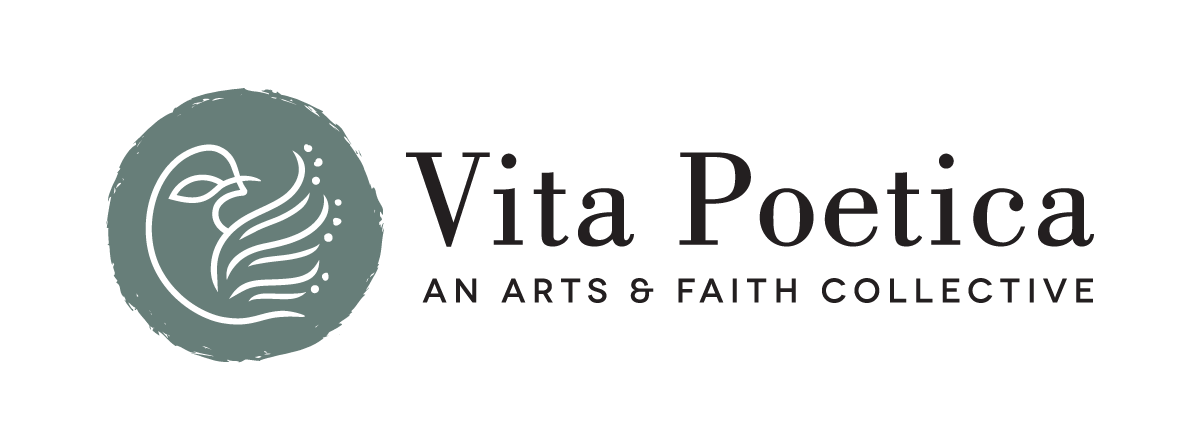Miriam
by Gerburg Garmann
Miriam, 2023, 72 x 48”. Acrylics, charcoal, and ink.
My Miriam project originally sprang from the 2022-2023 Religion, Spirituality and the Arts seminar titled “Water from the Rock.” The seminar, led by Rabbi Sandy Sasso and organized by the IUPUI Arts and Humanities Institute, delved into the Exodus narrative, particularly the part that presents us with Moses striking the rock for water.
The seminar encouraged artists to contemplate water's significance as sustenance, healing, and renewal, challenging us to reconsider our relationship with the earth. As part of the seminar, I decided to choose the figure of Miriam, Moses' sister, as the central figure for my personal ecological inquiry into water and rock.
In my artistic process, I always come back to the abstract depiction of women, it seems. Miriam is no exception. As in my other artwork, I strive to amplify women's stories, nurturing resilience and mirroring a wide spectrum of emotions. In Miriam, I aim to provoke introspection, offering both solace and provocation in a world grappling with ecological urgency.
This 72 x 48” painting depicts the figure who, according to biblical narrative, held the key to water. In my artwork, she has become a faceless figure who has turned her back away from both the viewer, as well as the Exodus figures that populate the canvas. Departing from conventional portrayals, she gazes into an uncertain future, ankle-deep in water — a tribute to Caspar David Friedrich's Wanderer Above the Sea of Fog, 1818. In my interpretation, Miriam has become somewhat of a Munch-like figure, without “The Scream,” his famous work.
Lines from Milton inscribed onto the canvas provoke contemplation. What lies ahead for humanity's relationship with the elements of water and rock?
While painting, I decided to take my project a few steps further and added word and sound to as well. I composed a soundscape in five movements: “Lament,” “Currents over Babbling Water,” “Shifting and Sliding,” “Rock Fall,” and the Miriam “Coda” to accompany the painting. To bring my academic and artistic interests together, I furthermore researched philosophers and poets from ancient to contemporary literature, because I wanted to find out what previous and current writers had to say about the ecological and spiritual interconnectedness of water and rock — that is, their significance in their own right and for us as humans.
The product of this journey culminated in a text collage intertwining my own poetry with lines from poets like Wendell Berry, Marc Hudson, John Milton, John Muir, and Shakespeare. Collaboration was pivotal. Dr. Marc Hudson provided the voiceovers, infusing depth into the five movements, while Dr. Brett Leonard polished sound files to professional standards.
Together, we crafted an immersive experience that blends music and narrative and invites reflection on our ecological responsibilities. Exploring intersections of art, spirituality, and ecology, I wanted to create a piece that holds uncomfortable truths, but that simultaneously communicates a positive message. My multi-sensorial Miriam project invites activism, imagination, and reflection. The entire project culminates in the last movement, the “Coda,” which ends with the following phrase: “So we will drink and walk and wait and see.”
My hope is for viewers to engage deeply with both the painting and the soundscape, and that the project will spark conversation and foster an ethical imagination in service of our environment.
The project in its entirety is accessible at the Religions, Spirituality, and the Arts website.
Gerburg Garmann is a painter, poet, and former professor of Global Languages and Cross-Cultural Studies. Her scholarly publications appear in English, German, and French in international journals. Her artwork and poems have appeared in various magazines and anthologies around the world.
